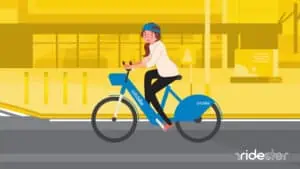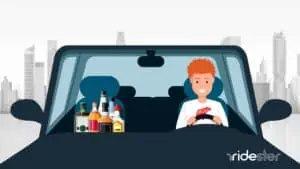Key Takeaways
- Multi-apping involves toggling between two or more gig economy apps to maximize job opportunities and earnings.
- Effective multi-apping requires familiarity with each app, awareness of market demand, and technological preparedness.
- Operational strategy includes pausing other apps when accepting a job, prioritizing tasks, and efficient time management.
- Maximizing multi-apping involves understanding geographical demand, tracking earnings across platforms, and utilizing supportive technology.
What is Multi-Apping?
At its core, multi-apping is the practice of applying to and working with two or more gig economy apps to take advantage of a larger pool of opportunities.
Whether it’s driving for both Uber and Lyft, delivering for DoorDash and Uber Eats, or a combination of rideshare and delivery services, multi-apping allows gig workers to optimize their time and earnings.
This strategy requires a high level of adaptability and familiarity with the gig economy’s demands, making it best suited for those who have already gained experience in this field.
Many gig workers combine rideshare and delivery services to diversify their income sources. Similarly, toggling between delivery apps based on demand and payout can optimize your earnings.
Related:
The Math Behind How Multi-Apping Helps Drivers Earn More
The math behind multi-apping is rooted in the gig economy’s task-for-money model. Unlike traditional jobs that pay for time, most of these gigs pay per delivery or per ride, making quantity key to earning more.
For instance, if a driver averages $5 per delivery, completing 5 deliveries in an hour yields $25, while 6 deliveries push this to $30. This model incentivizes completing as many deliveries as possible in the shortest time, achievable through multi-apping.
By using multiple apps, drivers can select the best-paying and most convenient orders, potentially doubling or tripling their earnings by strategically accepting multiple orders heading in similar directions.
This practice not only maximizes income by increasing the number of deliveries but also mitigates downtime associated with waiting for orders on a single app.
Brett’s Take: Thoughts From an Expert
One of the biggest downsides of the gig economy is a lack of control over the inbound demand to the platforms you’re working with.
While yes, you don’t have to go and find work like a freelancer or copywriter does, you do have a tradeoff – being sort of at the mercy of the gig platform whose demand you’re meeting.
I remember the days of sitting in my car for 10, 15, sometimes even 20 minutes while I waited for another ride request from Uber and Lyft to come through.
As the gig economy has grown, the issue of waiting between rides or deliveries has gotten better. And the gig platforms know it.
They’ve done a great job of implementing features such as scheduled delivery times or an on-demand ride que that updates as your driving.
However, sometimes it does occur. Multi-apping solves the issue of downtime, as well as many more.
Essentially, multi-apping allows drivers to be constantly on the move, reducing idle time, and optimizing their earning potential per hour spent on the road.
And in the world of a driver, time is the most valuable asset you have, and you should protect it at all costs.
A Visual Illustration of How Multi-Apping Impacts Earnings
Let me put into perspective how hedging your risk by using multiple apps measures up against limiting your time to a single platform.
For my example, I’ll assume that I’m driving with a delivery app, delivering food to customers.
The table below assumes an average payment per delivery and compares earnings based on the number of deliveries completed per hour with a single app versus multiple apps.
| Avg. Payment Per Delivery | Deliveries per Hour (Single App) | Earnings Per Hour (Single App) | Deliveries per Hour (Multi-App) | Earnings Per Hour (Multi-App) |
| $5 | 3 | $15 | 5 | $25 |
| $5 | 4 | $20 | 6 | $30 |
| $5 | 5 | $25 | 7 | $35 |
As you can see, by leveraging multiple apps, I can significantly increase the number of deliveries that I complete in an hour, which results in my hourly income rising.
For example, moving from 3 deliveries per hour to 5 deliveries per hour with an average payment of $5 per delivery increases earnings from $15 to $25 per hour.
This represents a substantial uplift in potential income when compared to the standard practice of delivering with just one app.
Getting Started with Multi-Apping
While I am all-in on diversifying my strategy with multi-apping, it is important to stress the importance of taking the time to lay a solid foundation to build on.
Before you just go out and start multi-apping, consider the following:
- Familiarity with Each App: Understand the ins and outs of each platform you plan to use. This includes everything from how to accept and complete jobs to understanding each app’s specific rules and payout structure.
- Market Demand Awareness: Know which services are in demand in your area. This will help you decide which apps to focus on, at which times of the day or week.
These two things take a bit of time to understand. My suggestion would be to apply for 2-3 different platforms and spend some time learning each.
My favorites are Uber, Instacart, and DoorDash. These are some of the most popular apps within each of their gig economy industries, and all offer lucrative sign-on bonuses and incentives to retain gig workers.
Once you have a base-level understanding, it’s time to try your hand at multi-apping.
A Note on Device Management
Given the heavy reliance on technology for multi-apping, managing your devices effectively is a very important thing to keep in mind.
Make sure that your battery life can last a decent amount of time, you have a plan that supports a high amount of data usage, but also consider having a backup device just in case.
Some gig workers find that using a tablet alongside their smartphone provides a better overview and easier management of multiple apps.
Along those lines, also make sure that your smartphone can handle running multiple apps at once. The last thing you need is your apps crashing and having to deal with the problems that arise as a result.
Operational Strategy
Once you’re set up, the key to successful multi-apping lies in effective operational strategy. As with learning the foundational aspects, this will take a bit of time to find what works best.
Here are some tips:
- Pause or Go Offline: When you accept a job on one app, pause or go offline on the others. This helps avoid the risk of service delays and ensures you can complete each gig to the best of your ability.
- Prioritize and Manage Time: With multiple apps vying for your attention, it’s crucial to prioritize jobs based on factors like payout, distance, and personal preference. Efficient time management will help you maintain high service quality across platforms.
Also be aware of how acceptance rates and other metrics affect your status on each platform.
While some apps have moved away from penalizing workers for low acceptance rates, others may still use these metrics to determine access to premium gigs or bonuses.
If you have a bad acceptance or completion rate on some platforms, you might receive less orders, become limited in the high-paying orders that you can claim, or even become deactivated.
How to Maximize a Multi-Apping Strategy
Once you find a strategy that works well, it is important to continually refine it to make it more efficient. I’ll outline a few tips below that can help with this.
- Geographical Strategy: Managing scheduled blocks and staying within delivery zones requires a strategic approach to geography. Being mindful of your location and the areas with the highest demand can help you secure more lucrative gigs.
- Earnings Tracking and Comparison: Use apps like Gridwise to track your earnings and compare your performance across platforms. This data-driven approach can help you identify which apps are most profitable for you and adjust your strategy accordingly.
- Safety and Efficiency with Technology: Apps like Para offer features tailored to multi-appers, such as auto-decline filters, estimated payouts, and food readiness estimates. These tools can enhance your efficiency and safety by helping you make informed decisions about which gigs to accept.
Frequently Asked Questions
Can you drive for Uber Eats and DoorDash at the same time?
Yes, you can simultaneously drive for Uber Eats and DoorDash. By managing your time and orders effectively, you can maximize your earnings by switching between apps based on demand and delivery payouts.
Can You Live Off 2 Delivery Apps?
Yes, you can live off working for two delivery apps by strategically managing your time and choosing the best deliveries across platforms, optimizing earnings and reducing downtime.
Wrapping Up
Multi-apping in the gig economy presents a viable strategy for maximizing earnings and maintaining a steady flow of work. However, it requires preparation, strategic planning, and a deep understanding of the market and technology.
By considering the points outlined in this post, gig workers can navigate the complexities of multi-apping effectively.
Remember, success in multi-apping doesn’t come overnight. It’s a skill honed through experience, adaptability, and continuous learning.
As the gig economy evolves, so too will the strategies and technologies supporting gig workers in their quest for flexibility and financial independence.





